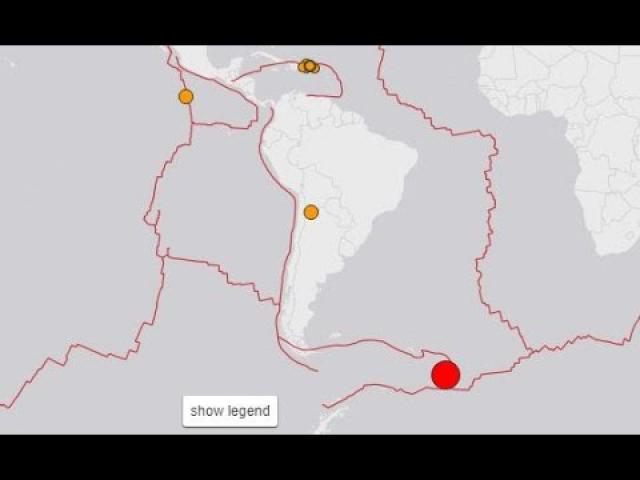SIX NEW* VOLCANOES found off the Coast of Italy hiding in plain sight.
Description
there is an "All the Gas Giants on the Same Side of the Sun" surprise in here. Wait for it.
God bless everyone,
T LEWISON
5430 BIRDWOOD RD. #416
HOUSTON TEXAS 77096
HTTPS://WWW.PAYPAL.ME/THORNEWS
www.venmo.com/TEric-Lewison
$THORnews on CashApp
Https://www.paypal.me/thornews
https://www.patreon.com/thornews
the article
https://www.nationalgeographic.co.uk/environment-and-conservation/2019/08/six-underwater-volcanoes-found-hiding-plain-sight
Six underwater volcanoes found hiding in plain sight
When the rocky mound lurched onto his computer screen aboard the R/V OGS Explora, geophysicist Emanuele Lodolo couldn’t believe his eyes. Just four miles off the coast of Sicily, the team had stumbled on a previously unknown volcano with an old lava flow trailing some 2.5 miles westward across the seafloor.
“We were quite surprised about this, because we were really very close to the coast,” says Lodolo, a researcher at Italy’s National Institute of Oceanography and Experimental Geophysics.
The edifice, named Actea, is one of six volcanoes recently discovered while scientists were mapping the underwater landscape of the Sicilian Channel, a heavily trafficked waterway off the southwest coast of the island. While Actea is the closest to shore, the structures were all found in the northwest side of the channel, within 14 miles of land, researchers report in the journal Marine Geology.
The volcanoes are not especially tall, comparatively speaking, rising between 52 and 350 feet from the seafloor. But because they sit inside the shallow channel, their tops are not very deep; Actea’s peak is the shallowest at just 110 feet down.
Eruptions from submarine volcanoes can pose hazards to both passing boats and populations nearby. Lodolo cautions that more study is needed to better understand potential risks from the newfound structures, and other geologists agree that any hazards are likely minimal. But the revelation that six volcanoes are lurking under a region regularly crisscrossed by maritime traffic underscores the importance of fully exploring what lies beneath the waves.
“Sometimes when you’re looking at an area that’s relatively undiscovered, you don’t even know what you might find,” says Western Washington University’s Jackie Caplan-Auerbach, who studies submarine volcanoes. “There are great mysteries in the ocean waiting to be discovered.”
The presence of six more volcanoes around Italy is perhaps not all that surprising, since these fiery features dot the landscape. The word “volcano” can trace its roots back to the simmering island of Vulcano north of Sicily, a spot where the Roman god of fire, Vulcan, supposedly foraged weapons.
Italy’s volcanism comes from the fact that the country rests near the collision of several tectonic plates—fragments of Earth’s crust and upper mantle that are engaged in a game of geologic bumper cars. In places where the plates collide, one often dives beneath another, forming what’s known as a subduction zone.
But in Italy, the situation is particularly complex. The country sits where the Eurasian and African plates are colliding, and the small Adriatic microplate is nestled between the two, to the east of Italy, where it is slightly twisting counter-clockwise. The situation gets even more wild south of Sicily. There, the seabed is starting to pull apart in what’s known as a rift, thanks to a slight clockwise rotation of Sicily’s southeastern regions.














